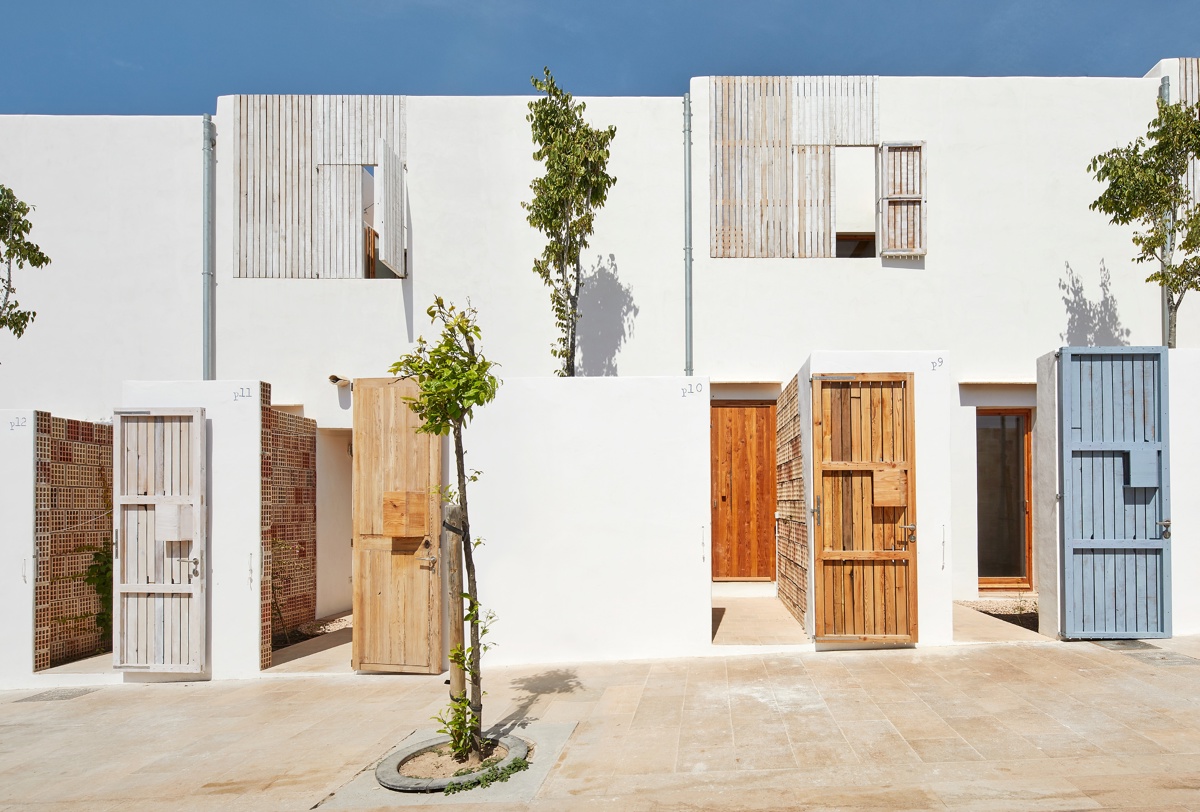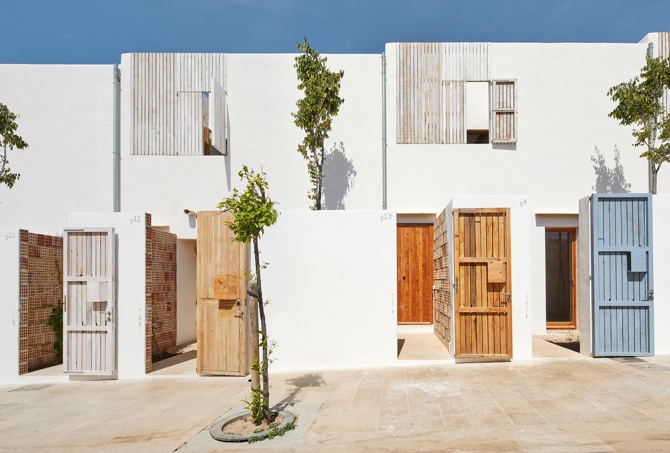Loading...
The project links heritage, architecture and climate change with the aim of reclaiming local resources as a cultural approach to contemporary research on sustainable solutions.
Traditional architecture has been a constant reference, not for its forms, but as a way of working. Therefore, we look for the local resources available (the junipers are now fortunately protected and the sandstone quarries - marès - have been exhausted): we only have what arrives by sea, the posidonia.
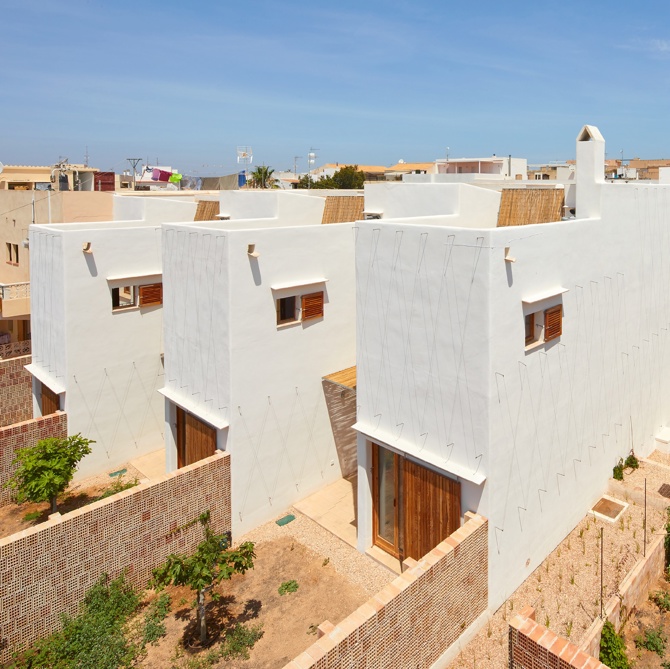
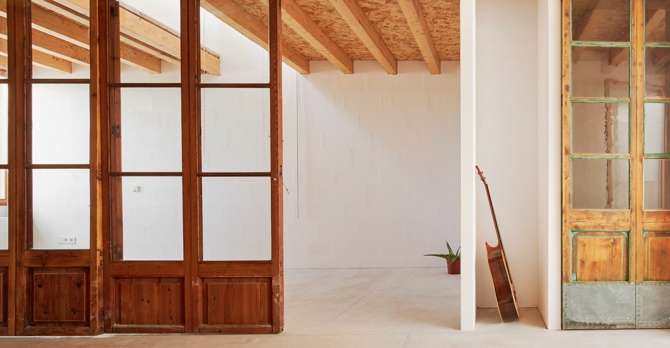
Thus, we propose a change of approach that has been applied to all parts of the building: instead of investing in a chemical plant 1,500 km away, we could invest the same amount in local labour, which should dry the posidonia in the sun and compact it by hand. Sea salt acts as a natural biocide and is completely environmentally friendly. The use of dried posidonia as thermal insulation reminds us that we do not live in a house, but in an ecosystem.
Main objectives
- To demonstrate the feasibility of the construction of the prototype at an additional cost of 5% over the usual price of IBAVI social housing buildings.
- Reduce:
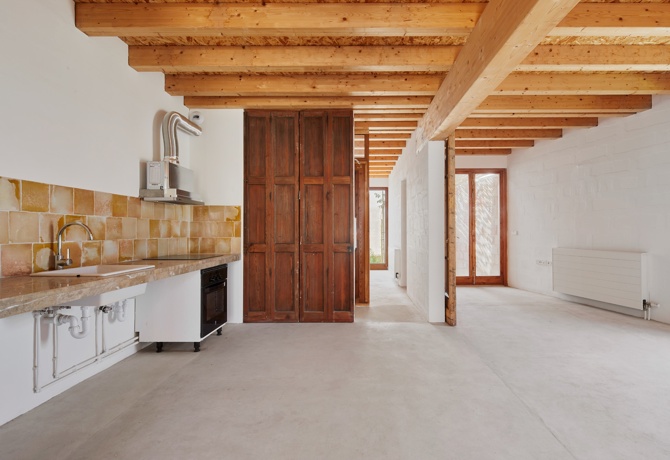
- 63% of CO2 emissions during the construction of the building. 775,354.6 kg/CO2 have been saved. Calculation carried out using ITEC's TCQ software.
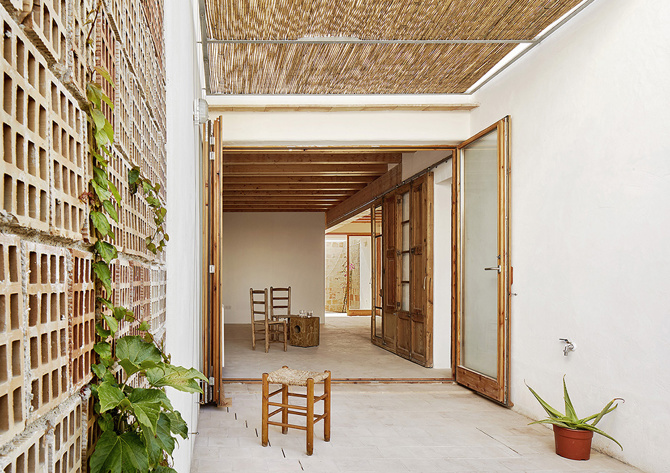
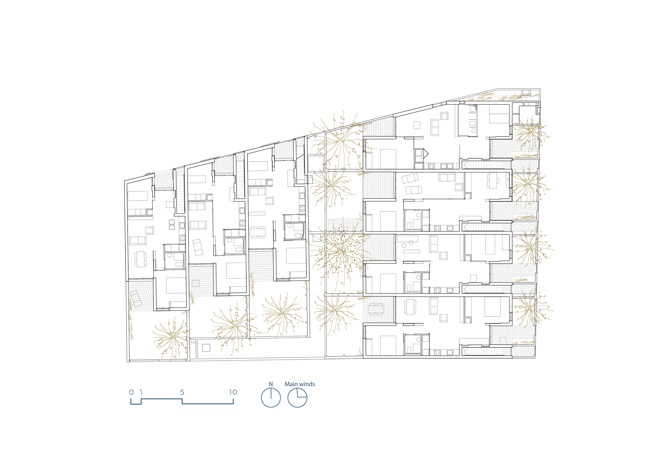
- 75% of useful energy over the lifetime of the building. Nearly Zero Energy Building (nZEB), with a maximum consumption of 15 kWh/m²/year (17,226.30 kWh/year). The average thermal comfort measured on site is 21°C in winter and 26°C in summer.
- 60% water consumption. Maximum limit of 88 l/person/day. Average consumption based on tenants' bills.
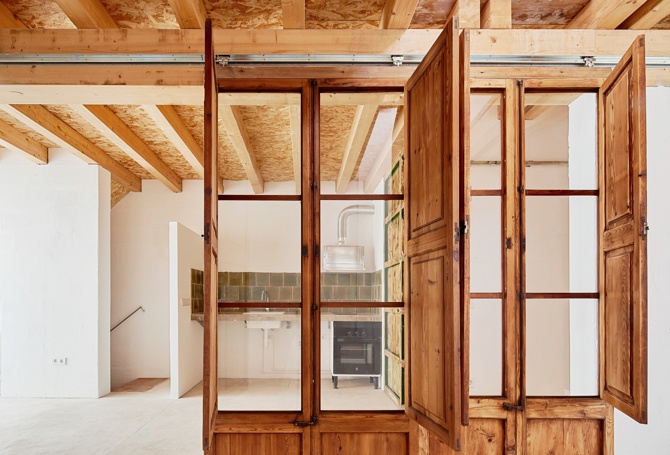
- 50% waste production during the construction phase. 36.98 tonnes have been saved through on-site reuse measures.
Organisation and programme
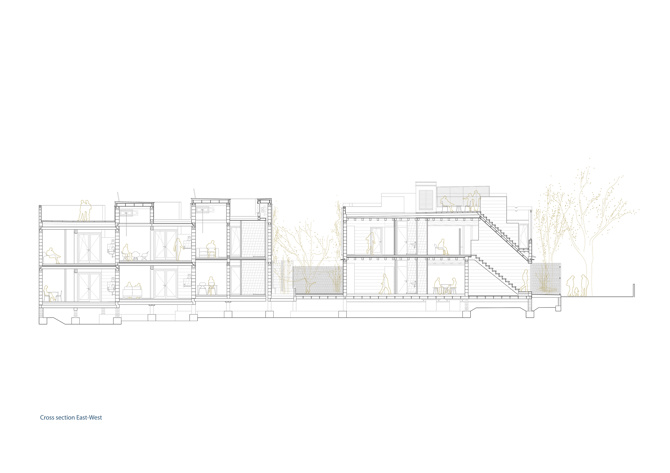
The two street façades, which face the main sea breezes (north and east) for cooling in summer, allow the volume to be divided into two separate blocks with different orientations. The entrance of all the houses is directly on the street. All flats are oriented in two directions with cross ventilation thanks to the Z-shaped living room layout and a bedroom in each corner.
All materials have been selected through a market study based on their embodied energy and the cost of transport to Formentera. We test solutions based on the recovery of local eco-friendly cottage industries with 0 km raw materials, which are in danger of extinction. These are usually small family businesses that do not have an eco-label, but can easily be inspected in person. The combined use of these locally available materials with imported materials that do have environmental labels is a replicable model that allows for a reduction of more than 60% of CO2 emissions during construction.
For example, the load-bearing walls with unreinforced lime foundations, the laminated wood floor slabs, the white lime plaster on the façades, the sandstone cistern vaults, the handmade glazed tiles, the bricks fired in biomass mortar kilns, etc. All the interior carpentry and the shutters on the ground floor have been made with second-hand doors and wood from the Deixalles waste management plant in Mallorca. The organisation of spaces and formal decisions are the result of knowledge of the advantages and limitations of natural materials, which are more fragile. This fragility has become a design opportunity.
General information
Life Reusing Posidonia: 14 social housing units in Sant Ferran
YEAR
Status
Built
Option to visit
Address
St. Sant Jaume, 14
07871 Sant Ferran - Illes Balears
Latitude: 38.706594773
Longitude: 1.4579020436
Classification
Building materials
Built area
Involved architects
Information provided by
XIV BEAU
XI BIAU
EUMies Award
Location
Itineraries
https://serviciosdevcarq.gnoss.com/https://serviciosdevcarq.gnoss.com//imagenes/Documentos/imgsem/45/45c9/45c9fb21-6b09-427c-b289-8a1390ae9cc1/0bdc523d-7838-433f-8f1d-fe9abcfa4ef6.jpg, 0000000040/Life reusing 5 .jpg
https://serviciosdevcarq.gnoss.com/https://serviciosdevcarq.gnoss.com//imagenes/Documentos/imgsem/45/45c9/45c9fb21-6b09-427c-b289-8a1390ae9cc1/bd5c4ff5-d37d-426e-ab2b-fe53c9573e04.jpeg, 0000000040/Life Reusing 02.jpeg
https://serviciosdevcarq.gnoss.com/https://serviciosdevcarq.gnoss.com//imagenes/Documentos/imgsem/45/45c9/45c9fb21-6b09-427c-b289-8a1390ae9cc1/43730e7c-e5f1-4347-8c7e-78cd53147514.jpg, 0000000040/Life reusing 1.jpg
https://serviciosdevcarq.gnoss.com/https://serviciosdevcarq.gnoss.com//imagenes/Documentos/imgsem/45/45c9/45c9fb21-6b09-427c-b289-8a1390ae9cc1/7a8332df-4faf-4902-891a-56bb0a29a1fe.jpg, 0000000040/Life reusing 2.jpg
https://serviciosdevcarq.gnoss.com/https://serviciosdevcarq.gnoss.com//imagenes/Documentos/imgsem/45/45c9/45c9fb21-6b09-427c-b289-8a1390ae9cc1/e3768f84-6f9a-4072-b14b-bf216c781eb8.jpg, 0000000040/Life reusing 3 .jpg
https://serviciosdevcarq.gnoss.com/https://serviciosdevcarq.gnoss.com//imagenes/Documentos/imgsem/45/45c9/45c9fb21-6b09-427c-b289-8a1390ae9cc1/3e41b12b-d47d-41ff-8ff9-19a036a0d561.jpg, 0000000040/Life reusing 4 .jpg
https://serviciosdevcarq.gnoss.com//imagenes/Documentos/imgsem/45/45c9/45c9fb21-6b09-427c-b289-8a1390ae9cc1/bfe7a036-bc84-4df9-be91-838534b0df2f.jpeg, 0000000040/Life Reusing 04.jpeg
https://serviciosdevcarq.gnoss.com//imagenes/Documentos/imgsem/45/45c9/45c9fb21-6b09-427c-b289-8a1390ae9cc1/fe8c59eb-a8b0-461a-8910-137466ac1c42.jpeg, 0000000040/Life Reusing 05.jpeg
https://serviciosdevcarq.gnoss.com//imagenes/Documentos/imgsem/45/45c9/45c9fb21-6b09-427c-b289-8a1390ae9cc1/962ded99-f80f-42bc-8819-c91298c3d98f.jpeg, 0000000040/1f84f442117b2b4569a63b1cf8e731163da2b27e.jpeg
https://serviciosdevcarq.gnoss.com//imagenes/Documentos/imgsem/45/45c9/45c9fb21-6b09-427c-b289-8a1390ae9cc1/7c3a1dc8-7f62-40dd-ae9f-c45b7b7dd99c.jpeg, 0000000040/161a460ee011ae7f4939f01891c50b646f589cc0.jpeg
https://serviciosdevcarq.gnoss.com//imagenes/Documentos/imgsem/45/45c9/45c9fb21-6b09-427c-b289-8a1390ae9cc1/f5eb4e25-f19b-4af7-a4b6-bcb8fabd45af.jpeg, 0000000040/e66c68e257566e4b29406f83c10359ba4726c15d.jpeg
https://serviciosdevcarq.gnoss.com//imagenes/Documentos/imgsem/45/45c9/45c9fb21-6b09-427c-b289-8a1390ae9cc1/c1ecccfd-b053-4a59-88b5-971bef61df4a.jpeg, 0000000040/ec9b62be000bb34f840ca2eed64535f4c73fd1a3.jpeg
